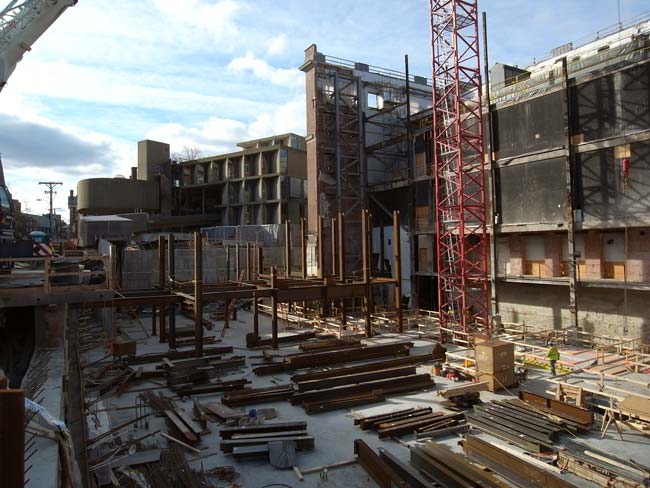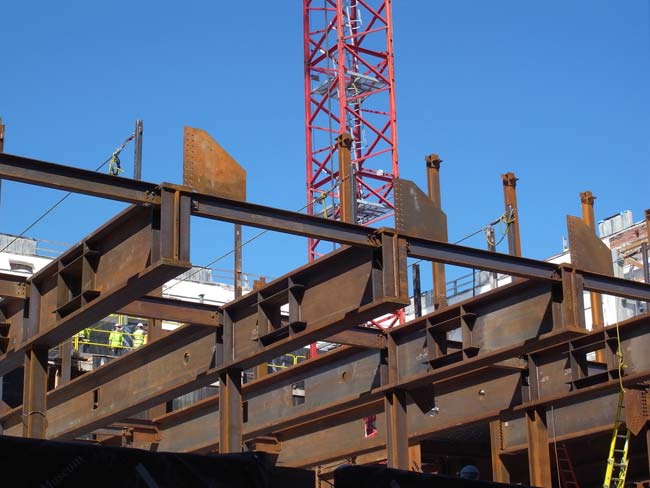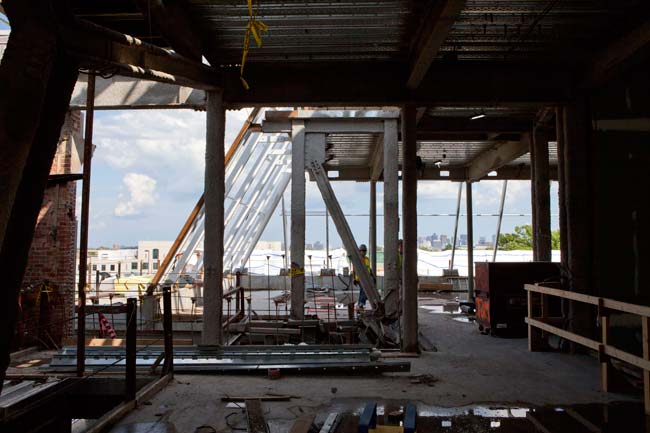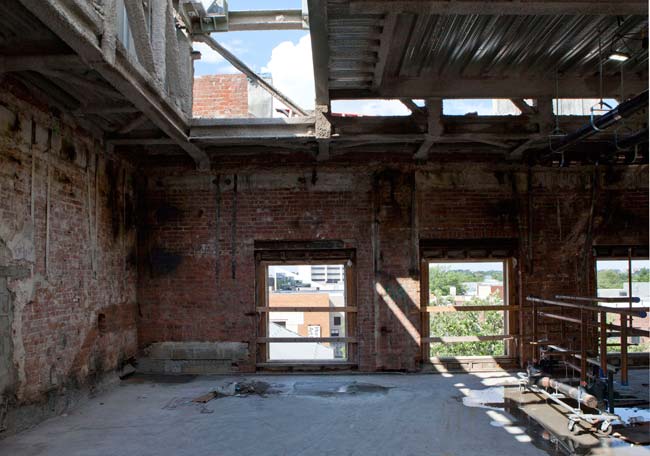The Harvard Art Museums’ facility is much more than just a gallery space where we display our collections—it’s a classroom that’s used by a wide range of faculty at Harvard University. While many of these professors are thinking about how they’ll use our resources in their curriculum when we open in fall 2014, Mark Mulligan, Associate Professor in Practice of Architecture and Director of the Master in Architecture program at Harvard University’s Graduate School of Design (GSD), has already been using the museums—but in a very different kind of way—to support his Cases in Contemporary Construction course.
A vital component of Mulligan’s class involves looking at a building project that’s in process. So, throughout the renovation and expansion of our historic facility, Mulligan has used our construction site as an active classroom. The opportunity arose when Mulligan’s former student Justin Lee got in touch with the professor when he returned to Cambridge as the on-site architect for the Renzo Piano Building Workshop (RPBW). They collaborated to use our facility in Mulligan’s architecture course, which focuses on understanding the design and construction of buildings and their related technologies.
Over the last five years, Mulligan and Lee worked with Danny Rico, Project Manager at Harvard Planning and Project Management, to coordinate tours of our construction site. These tours gave Mulligan’s students exposure to the process involved in transforming an architectural plan from a piece of paper into a physical structure. Students also gained an awareness of the not-so-obvious aspects of a building project that influence the overall cost—such as whether or not you can stage a crane on a building site—and the ongoing expenses of maintaining a facility like the Harvard Art Museums. Students thought about how the glass on the museums’ roof will be cleaned and how snow will be managed—issues that RPBW has considered and addressed in our facility’s design.
It’s that level of expertise and planning, the kind that RPBW specializes in, that Mulligan wants his students to take away from the site visits, so that they too can understand the many demands on a building like the Harvard Art Museums. “There’s something that’s very special about this project,” Mulligan notes of the preservation of the museums’ historic facility. “I’m used to taking students to see new construction . . . and [touring the Harvard Art Museums’ construction site] served a dual purpose: it educated us not only about contemporary technique, but also about how a contemporary architect interfaces with an older form of construction that we’re not so fluent in today. . . . It’s the way of the future—many of our students when they go out into the world are going to be working with existing building stock in their designs. In other words, they will be renovating 19th- and 20th-century buildings and adding something to it that’s new and exciting.”
Now that our renovation and expansion project is nearing completion, Mulligan is looking for a new building site to use as a case study in innovative construction. He’ll continue using the Harvard Art Museums as a reference point in this course, and who knows—perhaps he’ll return to use our facility as a case study in sustainability for a future seminar.







